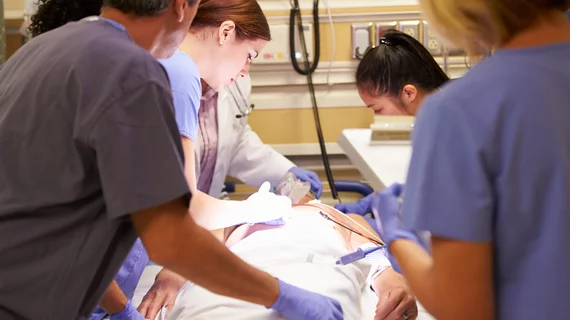Using a computed tomography-guided approach significantly improved IVC filter retrieval rates at one national university hospital, according to new findings published in Clinical Imaging.
Discharging patients before removing their filter typically indicates it will remain with them permanently, opening individuals up to potential long-term complications. There have been plenty of recent attempts to increase retrieval rates, but they’ve mostly fallen flat, the authors noted.
Korean researchers, however, found success using contrast-enhanced CT to assess patients at risk for venous thromboembolism (VTE)—common among IVC filter recipients—and to determine when and if their filter can be safely removed.
Using this active strategy provided interventionalists key clinical insights to help boost overall in-hospital retrieval rates from 72% to 99%, the researchers reported Wednesday.
“This study suggests that VTE in trauma patients resolves much faster than is usually expected,” Miran Kim, with Kyungpook National University Hospital’s Department of Radiology in Daegu, Korea, and colleagues explained. “Early visualization of the VTE improvement on imaging can enable physicians to decide when to remove the filter.”
In March 2017, the group developed their active retrieval strategy to evaluate patients with suspected thromboembolism earlier and safely remove more IVC filter before discharge. A multidisciplinary group of providers discusses the CT-based VTE findings before making a treatment decision.
Kim and co-authors retrospectively assessed 177 trauma patients who underwent pre-filter retrieval VTE-CT. And the overall retrieval rate topped 84% with a mean time until retrieval of 32 days.
In a subgroup analysis, patients were divided into two groups: 54% underwent filter retrieval before the new approach was implemented and 46% received the new active strategy. Those in the latter group exhibited a 99% retrieval rate, compared to 72% in the other cohort.
With all of CT’s benefits, clinicians must also weigh its inherent radiation exposure, the authors explained. But if patient factors call for noninvasive imaging before IVC procedures, the radiation risk is likely worth it, they noted.
“Thus, VTE-CT as a tool for assessing filter retrievability may have advantages that override the potential risk from radiation exposure, though further studies are necessary to evaluate this situation,” Kim and colleagues concluded.
Read the entire study published April 13 in Clinical Imaging here.

